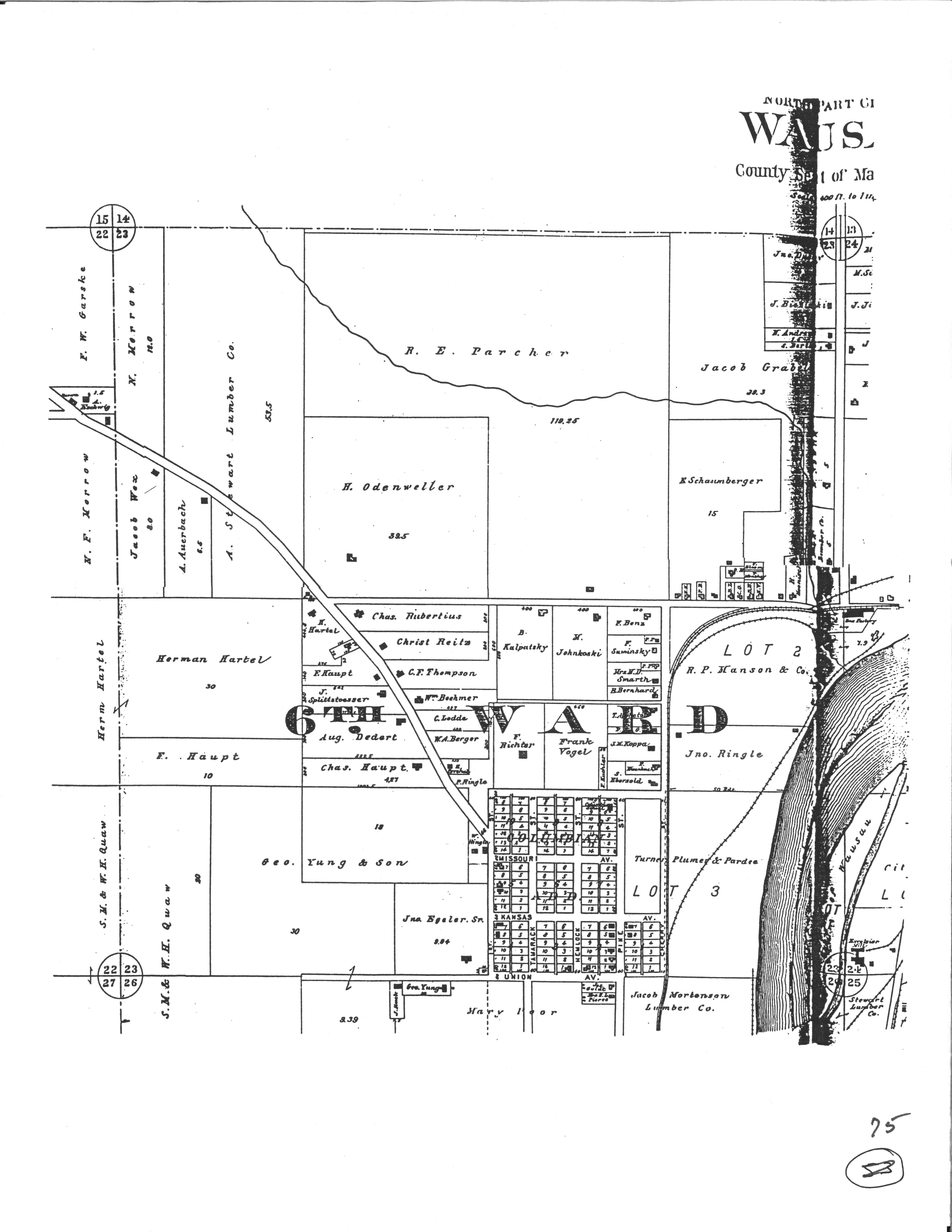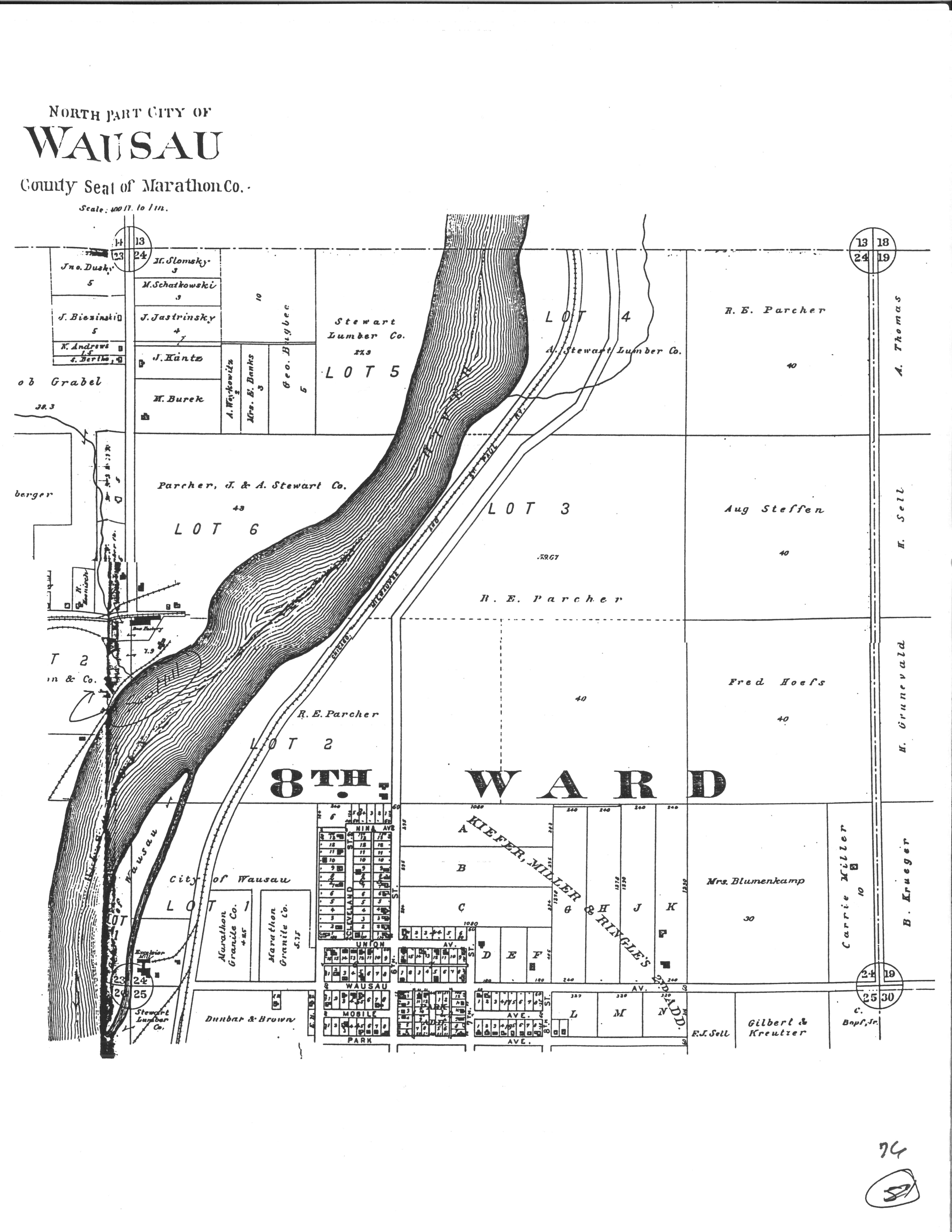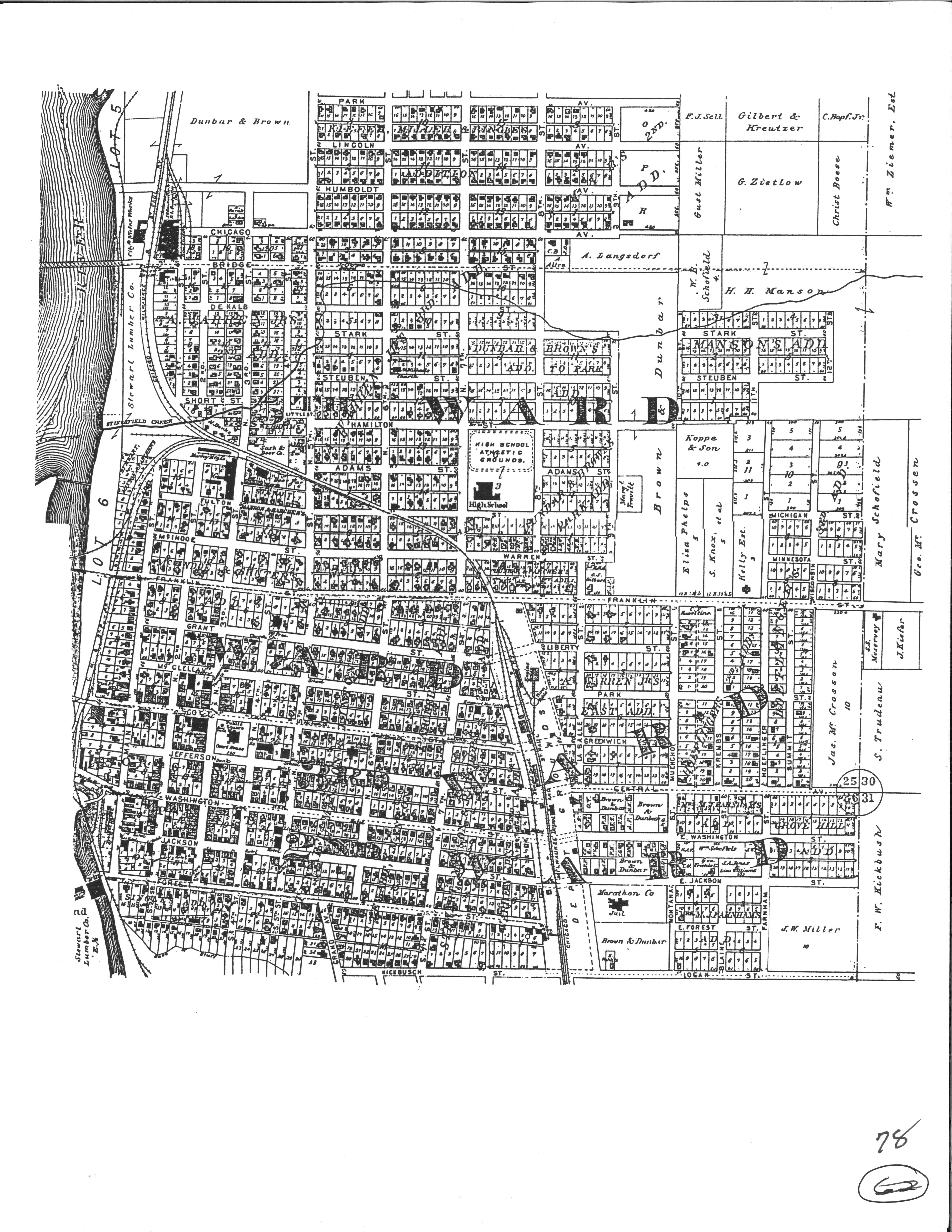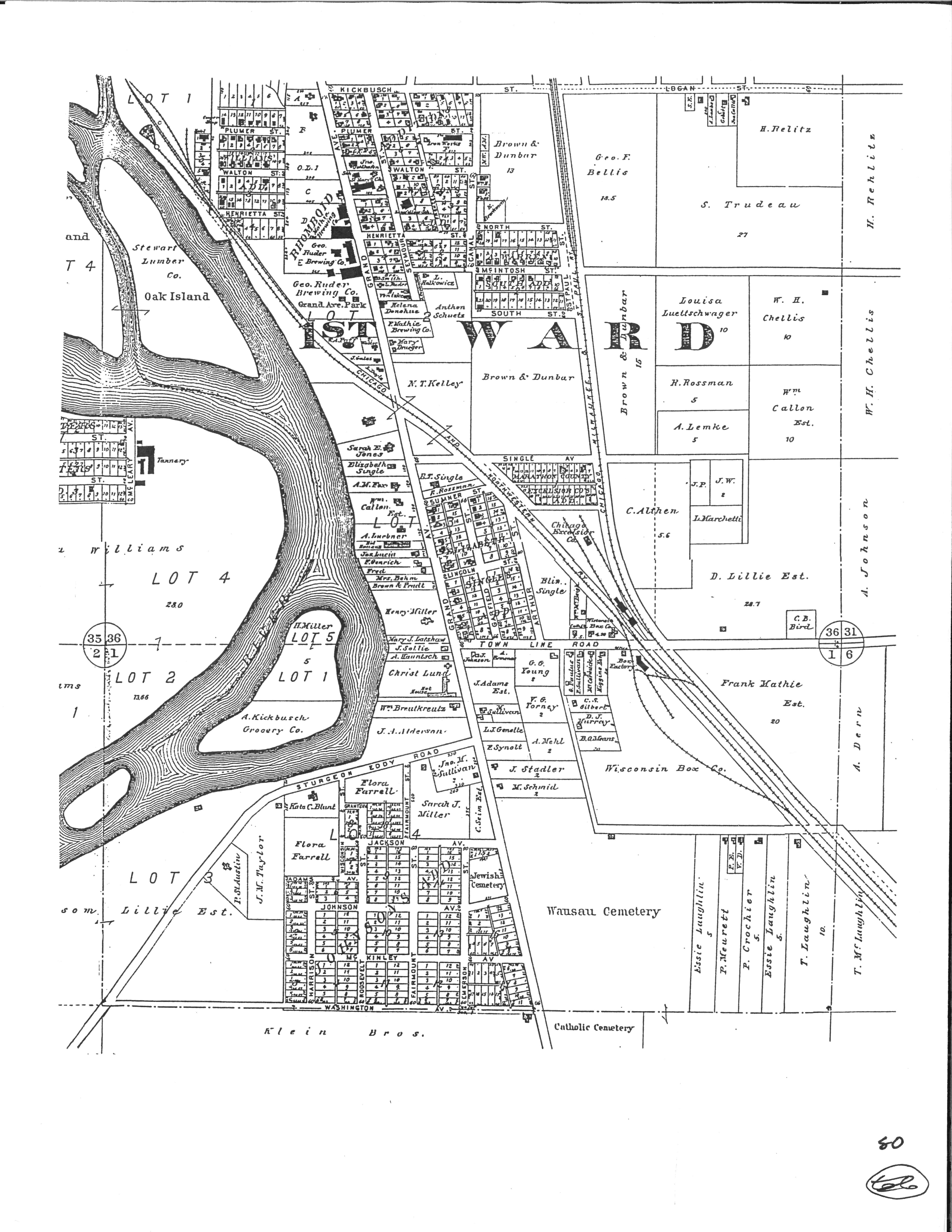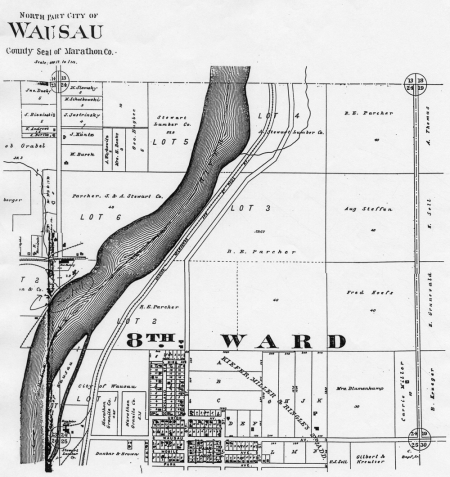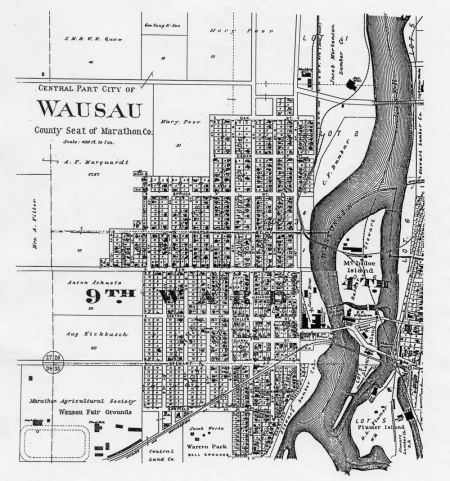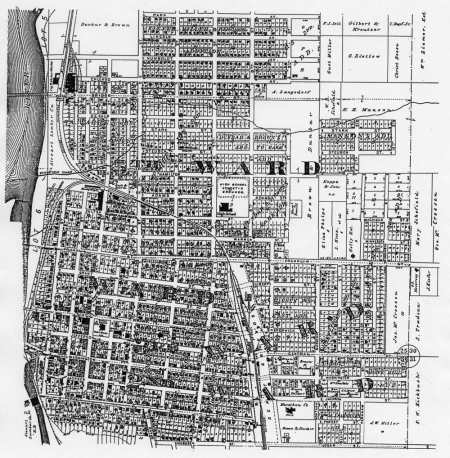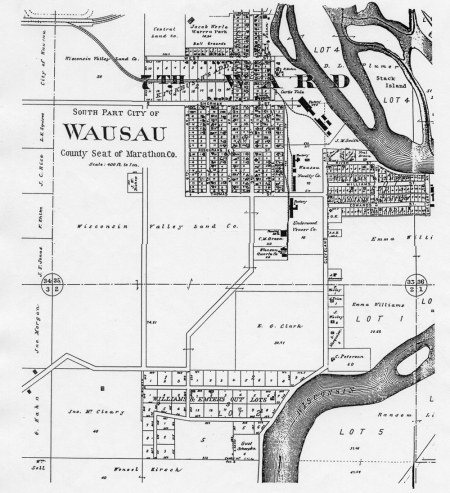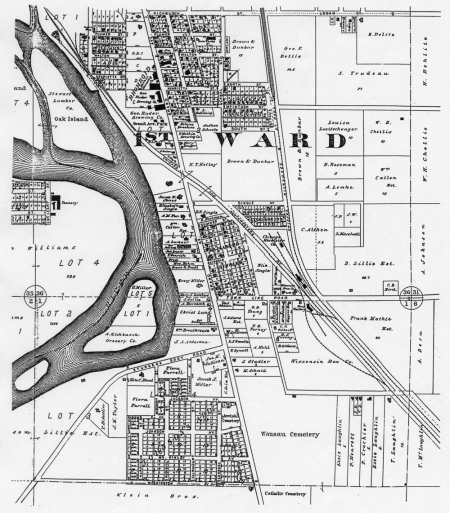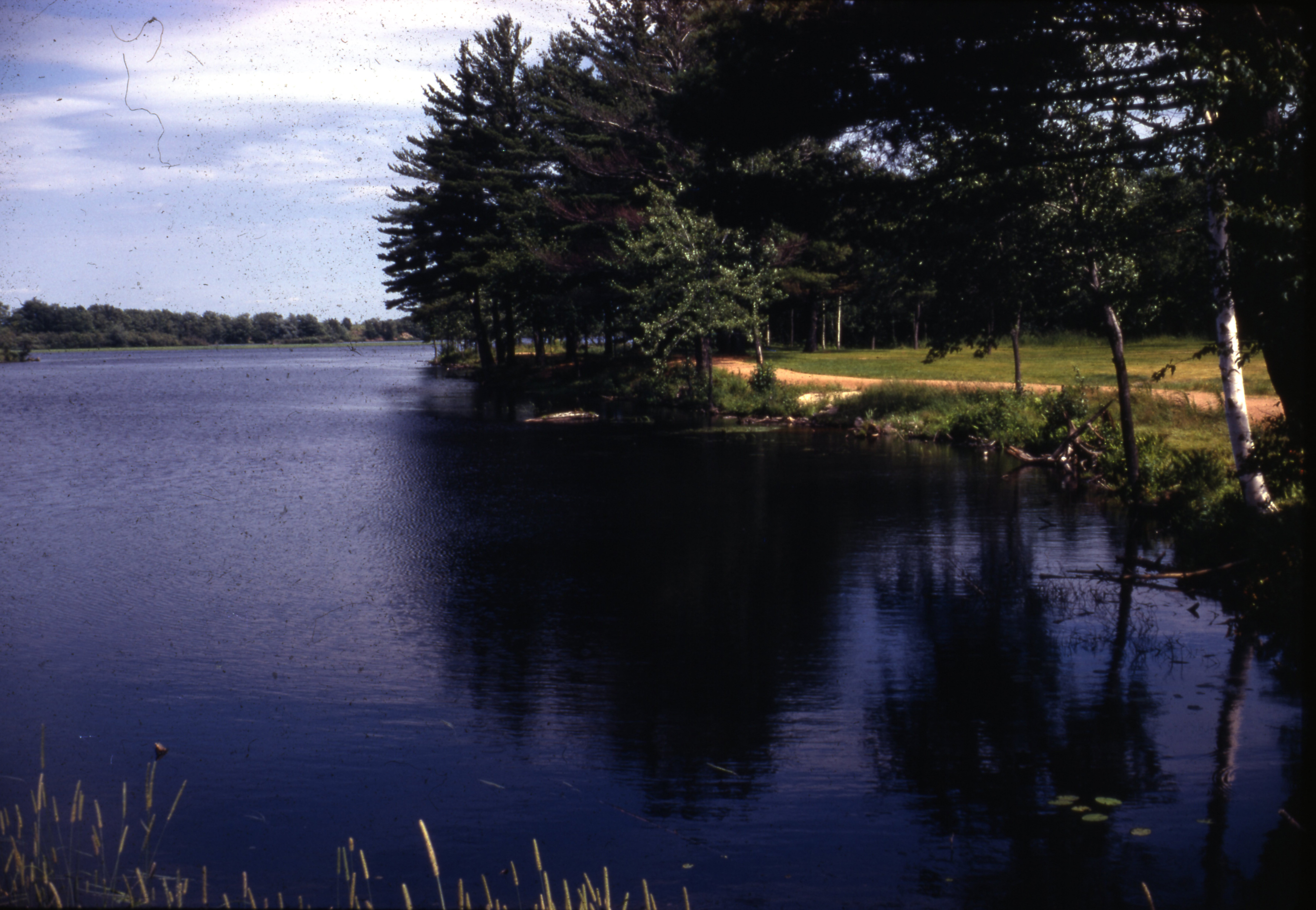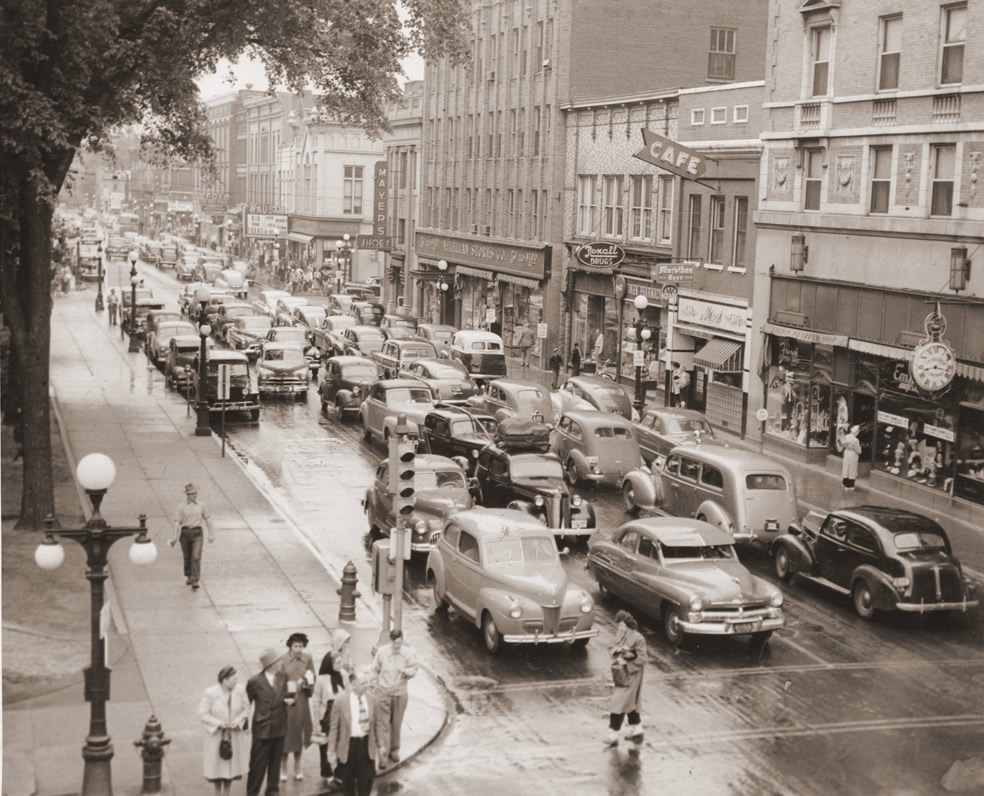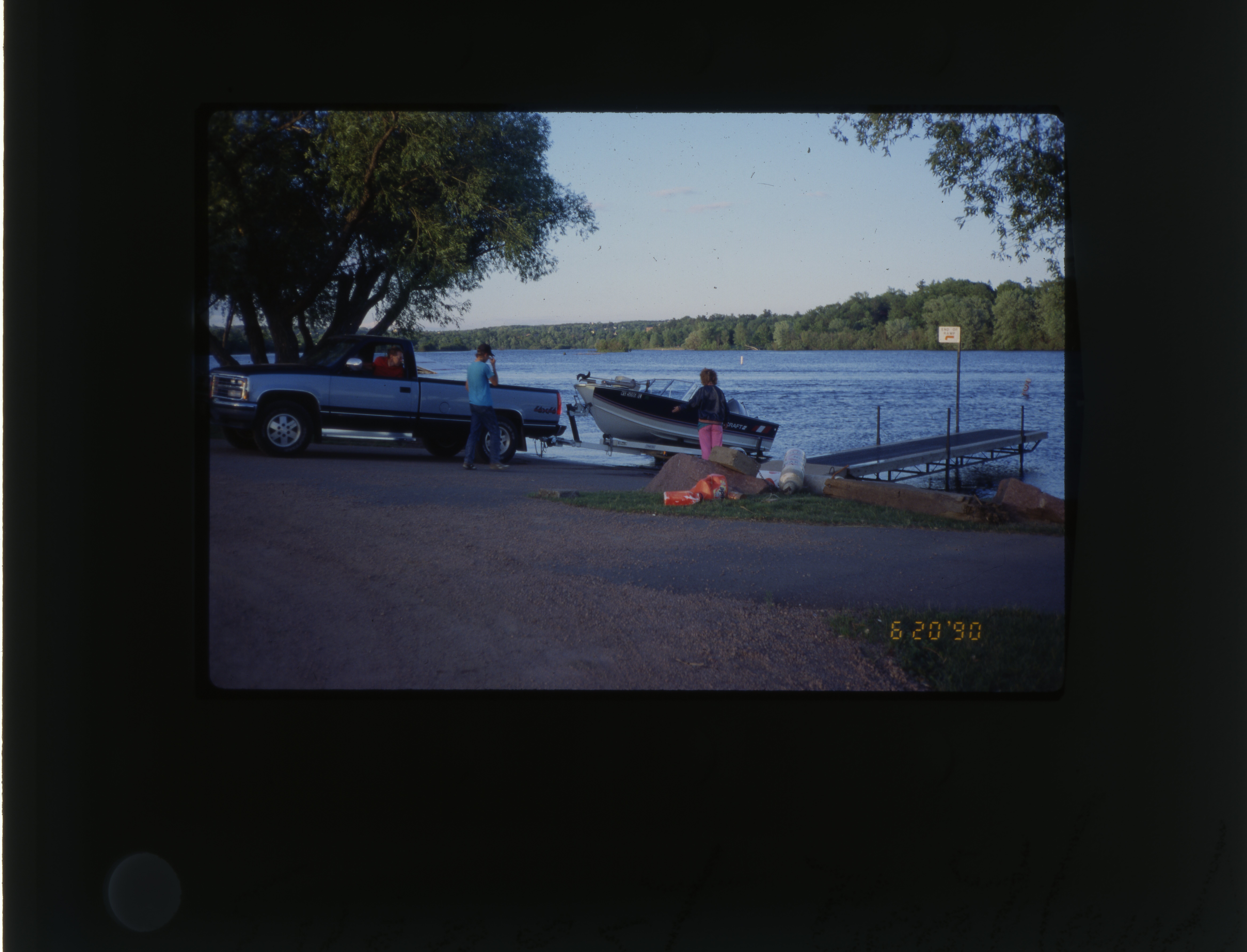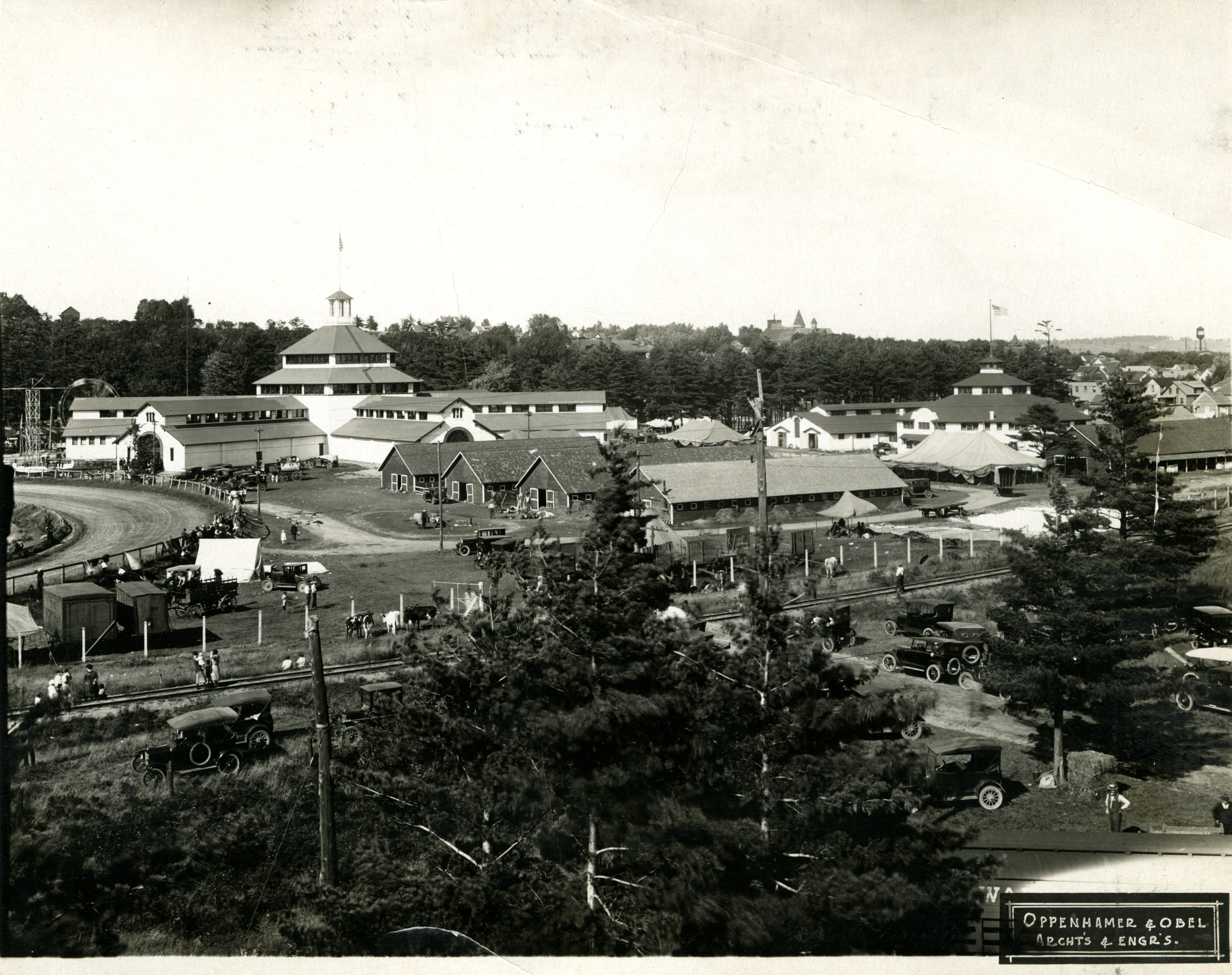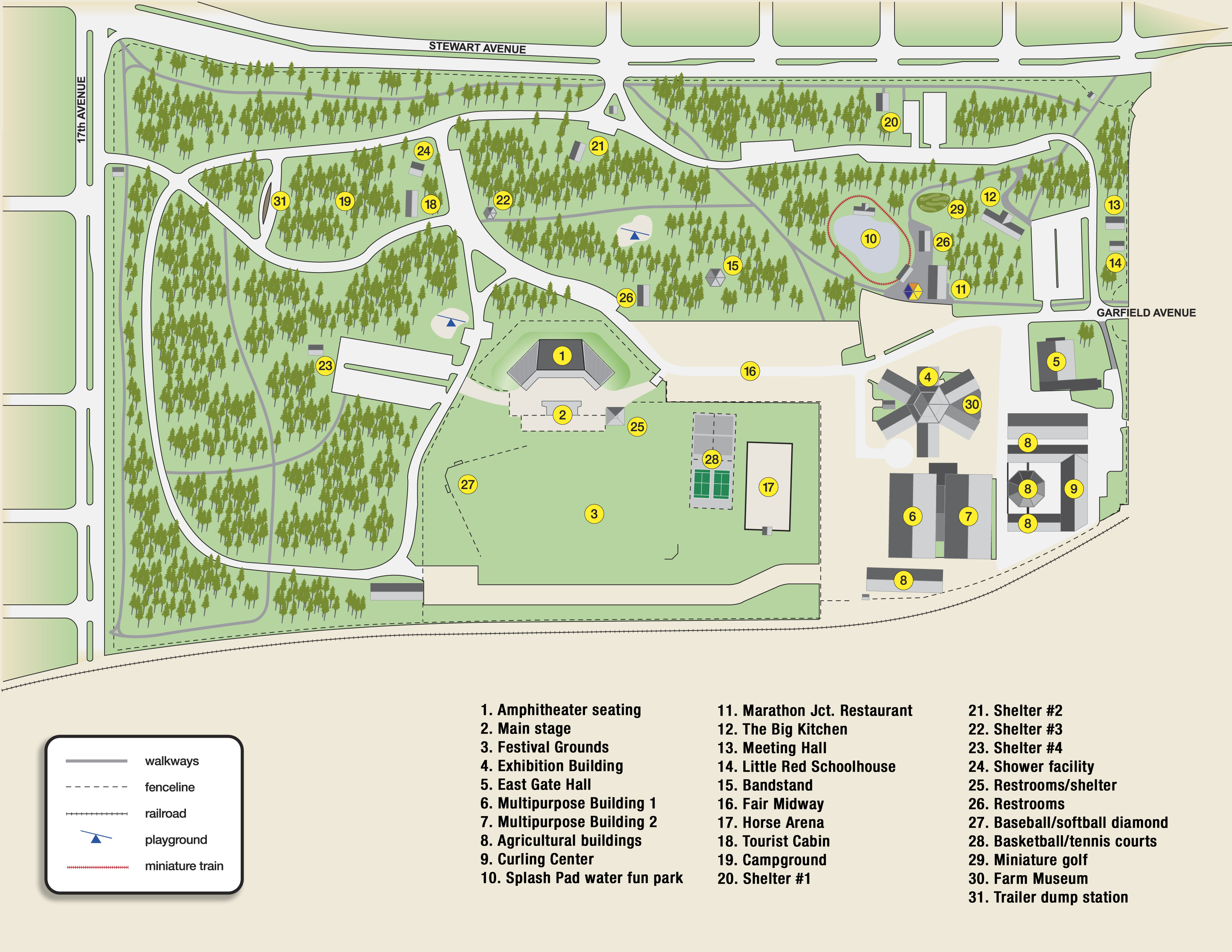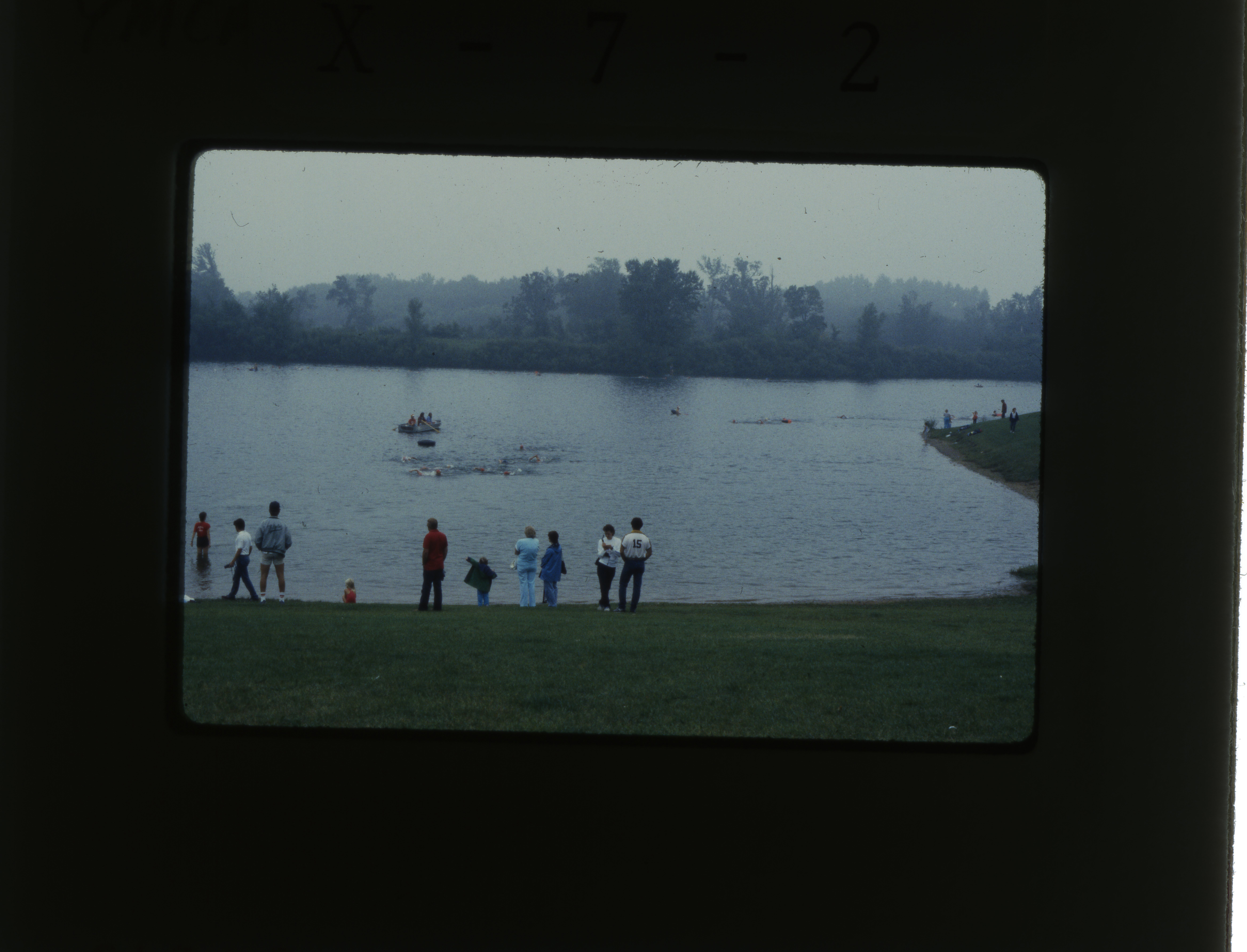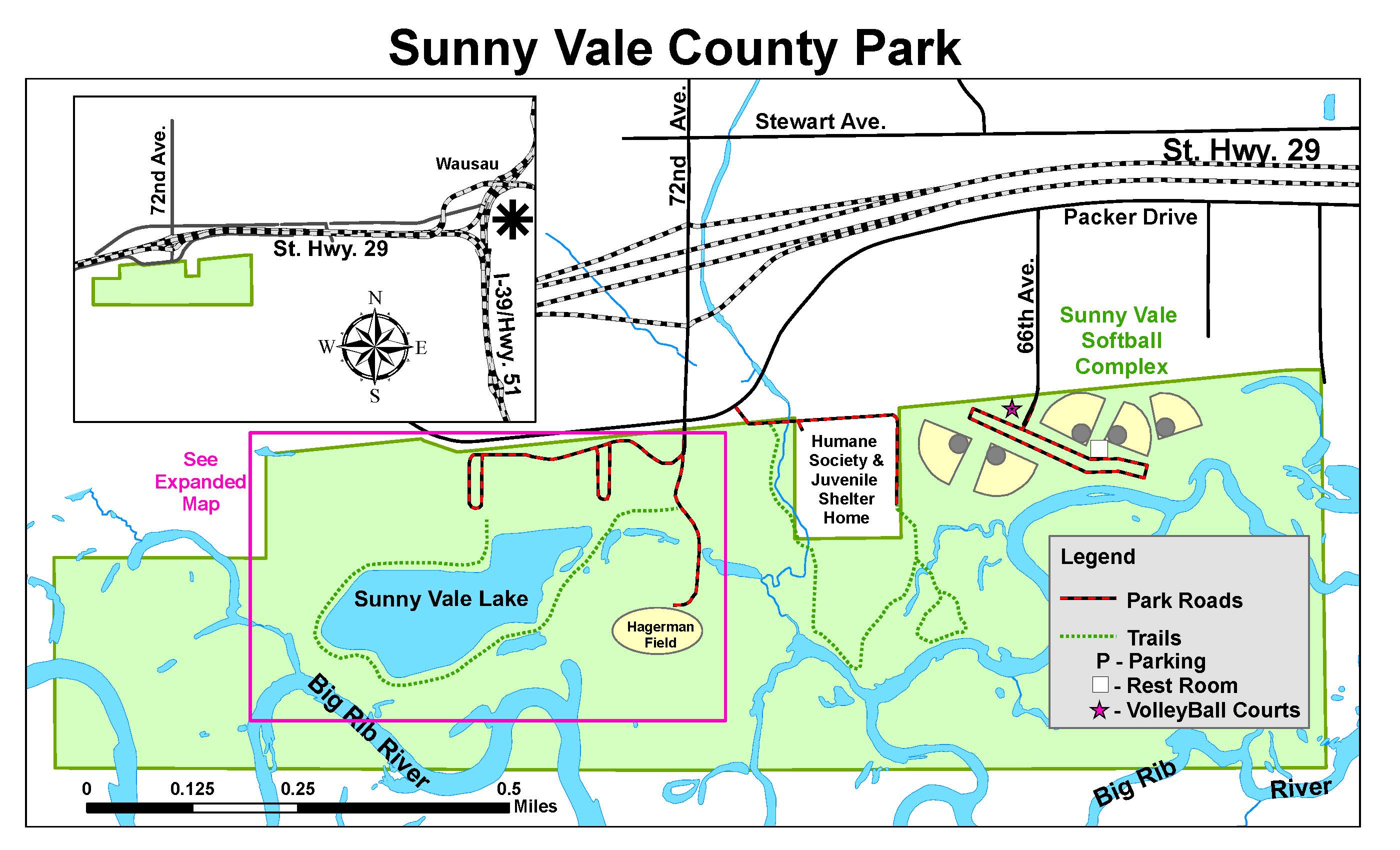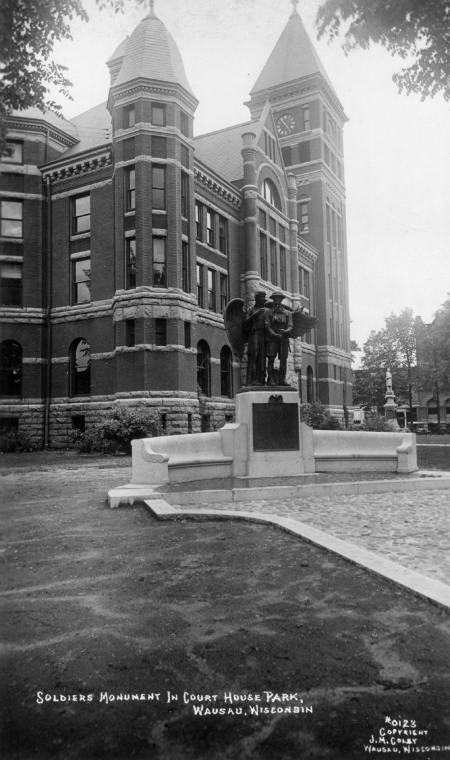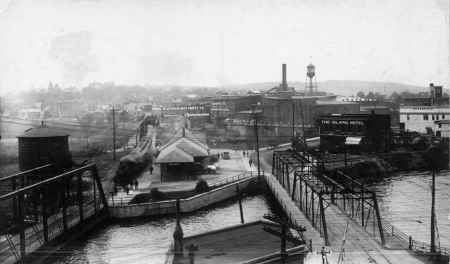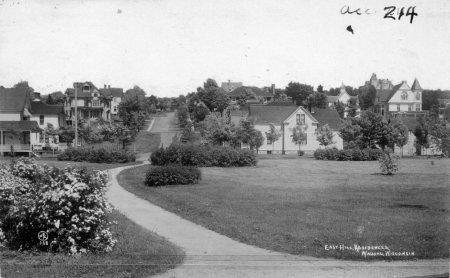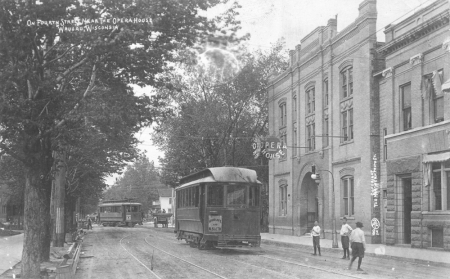Search our Places Database
Wausau, City of
Return To List of Locations | Back to Search
For more information on this location, please contact our research library.

Author:
Mary Moltzan
Location:
T. 28 N. - R.7 & 8 E. & T. 29 N. - R.7 & 8 E.,Townships of Weston, Stettin, Texas, and Wausau
Founded:
1852
Formallized:
April 1861
Background:
Population: 1905-14,458, 2000-38,426.
Wausau was incorporated as a village in April 1861 and received a city charter in 1872. Originally known as Big Bull Falls, the land along the Wisconsin River was transferred by treaty to the U. S. government in 1836. Two years later, George Stevens sent lumbermen up river, and by 1840 a sawmill was in operation.
One of the first men to spur the growth of business in Wausau was Walter McIndoe, who arrived in 1846 and helped in the formation of Marathon County. He and another man purchased the Stevens' mill in 1849. McIndoe was the man who changed the name of Big Bull Falls to the Chippewa word, "Wausau."
Wausau flourished due to a combination of central location and good water power and transit, as well as the foresight of a group of civic leaders known as the Wausau Group. These men saw the eventual end of lumbering at the beginning of the 20th century and expanded into papermaking, manufacturing and insurance.
First Public Official:
August Kickbusch
Biography:
Kickbusch was in the area by 1860 and involved in various business ventures including wholesale grocery, lumber mills and a brick yard. He was a founder and first president of the First National Bank. He was also active in politics as president of the village board and first mayor. Kickbusch returned to his native Pomerania, Prussia in 1867 and recruited over 700 people to emigrate to the Wausau area. He died on May 28, 1901.
Post Office Established:
May 4, 1850
First Postmaster:
Charles Schuter
About The Post Office:
The P.O. is still in service.
Railroad:
The first train of cars of the Wisconsin Valley Railroad Company came to Wausau on October 31, 1874. The Milwaukee Road depot, located on Grant Street, was built as a stopping place for the Wisconsin Valley division of the Chicago, Milwaukee and St. Paul Railroad. Passenger service stopped in 1970. The depot gained national attention when it was used in advertising by Employers Insurance of Wausau.
The Milwaukee, Lake Shore and Western Railway (later part of the Chicago and Northwestern Railroad) reached Wausau and Clarke Island in 1880. The Chicago and Northwestern purchased the track and built its passenger depot, the oldest depot in Wausau, in 1899.
Churches:
1. First Presbyterian Church - the first church was built in 1880.
2. St. Stephan's Evangelical Church was organized in 1881.
3. The Universalist Church - the first church was built on the corner of 5th and McClellan in 1871.
4. The First Baptist Church on the corner of 4th and Grant was dedicated in 1888.
5. Swedish Methodist Evangelical Church, organized in 1895, built a church on Main St. in 1905.
6. St. Mary's Catholic Church was built in 1871 and rebuilt in 1890-91.
7. St. Paul's Evangelical Church - the first church was built in 1863. The second church was built in 1886.
8. Methodist Church - The first church, on the corner of 1st and Grant, was built in 1859. The second church, on the corner of 3rd and Franklin, was built in 1905.
9. Zion's Church - The first church was located on Seymour St. The second, located on 5th and Scott, was built in 1884.
10. A German Reformed Church was built in 1888.
11. West Side Presbyterian Mission
12. St. John's Episcopal Church was built in about 1871.
13. St. Michael's Church - The first church was built in 1886.
14. St. James Catholic Church was built in 1911-12.
Schools:
1. In 1861-62 the first school was built near the present Washington School. It stood until 1889.
2. Wausau High School was first built in 1898-99.
3. Longfellow School was built in 1894.
4. Humbolt School was first built in 1873-74.
5. Washington School was built in 1889.
6. Franklin School was built in 1883.
7. Columbia School was built in 1885.
8. Grant School was first built on 1st Ave. in 1881, with a second school built in 1910.
9. Lincoln School was built in 1883.
10. Marathon County Training School for Teachers was built in about 1899.
11. St. Mary's Catholic School - first building was erected in 1883.
12. Wausau Business College was founded in 1886.
Business:
By 1867, Wausau supported 7 general stores, a hardware store, 3 wagonmakers, a toy store, 4 shoemakers and 7 saloons.
In 1857, the first newspaper, Central Wisconsin, was published.
Dry Goods Store of Nathan Heineman - In 1873, Nathan and his brother Benjamin came to Wausau and established a general mercantile business under the firm name of Heineman Bros. In 1895, the business ended, and the following year Nathan opened his own store.
In 1890, Mayer Shoe Store began when Charles B. Mayer formed a partnership with his brother-in-law, Alfred Richard, calling the business Mayer and Richard. Richard left the business in 1895, and Charles B. Mayer then conducted the business alone.
Employers Mutual Liability Insurance Company of Wisconsin started selling insurance in 1911.
The Grand Opera House, built in 1899, was replaced by a newer Grand Theater in 1927.
Check other sources for more early Wausau businesses
Industry:
Flour milling began in 1857-58.
The earliest sawmill was built by George Stevens in 1839. Reaching its peak in the 1890's, the lumber industry had 13 sawmills within the city limits in 1893.
Sash, Door and Box Mfg. - The first sash and door factory was established in 1872 .
The earliest cigar factory is thought to have been that of E. C. Kretlow sometime before 1874.
Ruder Brewery - George Ruder began brewing beer in a small shed near his home and by 1880 the plant on Grand Avenue was the largest brewing company in northern Wisconsin.
Mathie Brewery - Frank Mathie established a brewery on Grand Avenue in 1869 next to the Ruder Brewery. They merged and became the American Brewing Company in 1918.
D. J. Murray Manufacturing Company - This company was originally established by Ely Wright. In 1879, D. J. Murray was admitted to a partnership and the firm's name became Wright & Murray. Wright retired, and the D. J. Murray Company was organized in 1881. It became the largest foundry and machine shop in the Northwest.
The Curtis & Yale Co., was begun in 1881 as a branch of Curtis Bros. & Co. of Clinton, Iowa. It was a sash, door and blind company.
These are just a few examples of the early industries in Wausau. Check other sources for more.
Farming:
The first agriculture in Wausau consisted of vegetable gardens planted by factory and mill workers in the 1840's. The first real farms in the 1850's and 1860's developed outside the present city limits. Domestic Ginseng gardens began to be planted in about 1900. Dairies began to appear in Wausau in the 1880's. Prior to that, milk products came from the rural farms.

